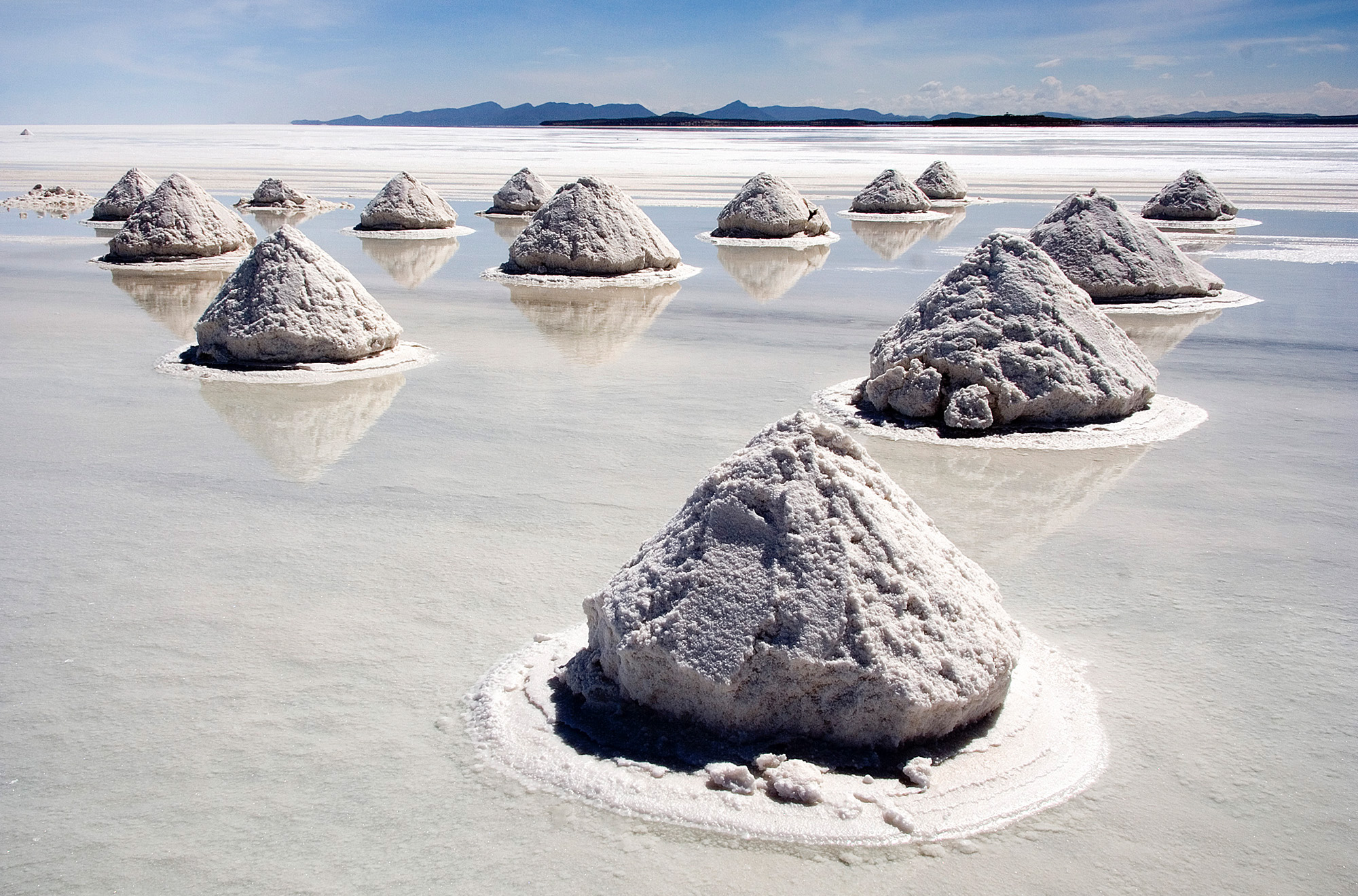Salar de Uyuni in Bolivia is the world's largest salt flat, stretching over 10,000 square kilometers. This expansive natural wonder is renowned for its mirror-like surface, which emerges during the rainy season, creating stunning reflections of the sky. The salt flat is situated in the southwest of Bolivia, near the crest of the Andes, and provides one of the most surreal landscapes on Earth. It sits at an elevation of 3,656 meters above sea level and is a remnant of prehistoric lakes that evaporated long ago.
Historically, Salar de Uyuni contains vast lithium reserves, which are significant for the global production of batteries and electronics. The salt flat also holds cultural importance for the indigenous people of Bolivia, including the Quechua and Aymara communities, who have traditionally harvested its salt. Additionally, it supports a limited but unique biodiversity, including species like the pink flamingo that breeds in its saline ponds.
Notable landmarks within Salar de Uyuni include the Isla Incahuasi, an island filled with giant cacti and coral-like structures, and the Hotel de Sal, a hotel constructed entirely of salt bricks. The flat's geographical isolation and climatic conditions—arid, with stark temperature variations between day and night—create an otherworldly environment that is both harsh and hypnotically beautiful.
The Dakar Rally, a famed off-road endurance event, has chosen the Salar de Uyuni as part of its grueling course, attracting attention from motorsport enthusiasts around the world. Visitors to the salt flats can participate in tours that showcase the geology and ecology of the area and offer breathtaking views, especially during the wet season when the land turns into a natural mirror.
 Luca Galuzzi (Lucag), edit by Trialsanderrors, CC BY-SA 2.5, via Wikimedia Commons
Luca Galuzzi (Lucag), edit by Trialsanderrors, CC BY-SA 2.5, via Wikimedia CommonsLog in to write a review.
Sustainable Travel Tips
Plan Mindfully
- Choose direct flights when possible
- Travel during off-peak seasons
- Pack light and bring reusables
- Prefer eco-friendly accommodations
At Your Destination
- Use public transport or walk
- Support local businesses
- Respect wildlife and habitats
- Choose activities with minimal impact
Daily Habits
- Reuse hotel towels
- Take shorter showers
- Turn off lights/AC when out
- Carry a reusable water bottle
